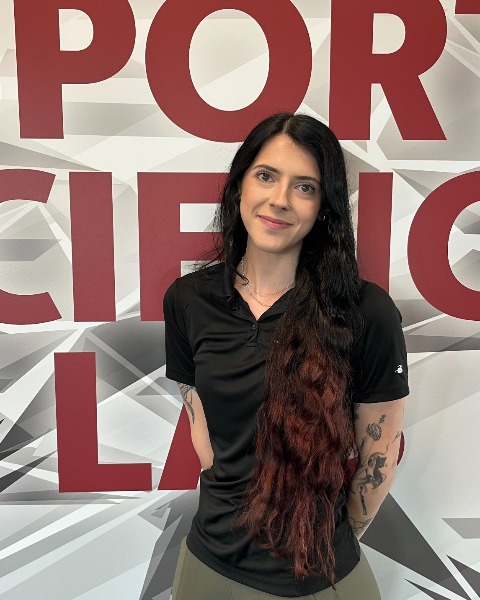Nutrition/Ergogenic Aids
(23) ACUTE EFFECTS OF CAFFEINE AND THEACRINE ON REACTION TIMES IN TACTICAL PERSONNEL UNDER PHYSICALLY FATIGUING CONDITIONS


Blaine S. Lints, MS, CSCS,*D
Doctoral Student
University of South Carolina
York, South Carolina, United States- AH
Adam T. Harrison
Post-doctoral research fellow
University of South Carolina
Columbia, South Carolina, United States 
Gianna F. Mastrofini, MS
Doctoral Student
University of South Carolina
Cayce, South Carolina, United States
Sten O. Stray-Gundersen, PhD
Research Fellow
University of South Carolina - Sport Science Lab
Columbia, South Carolina, United States- AC
Alexa J. Chandler
Doctoral Student
University of South Carolina
Columbia, South Carolina, United States - RM
Robert D. Moore
Professor
University of South Carolina
Columbia, South Carolina, United States - SA
Shawn M. Arent
Department Chair of Exercise Science
University of South Carolina
Columbia, South Carolina, United States
Poster Presenter(s)
Author(s)
Introduction: Optimizing human performance under stressful physical and cognitive conditions is paramount during high-stakes military operations. As such, interventions to improve warfighter performance by mitigating task-induced cognitive performance deficits are necessary. While caffeine is the mostly widely consumed psychoactive substance in the world, the common side effects (i.e. anxiety, shakiness, irritability) may be detrimental to some warfighter operations. Theacrine, a purine alkaloid similar in structure to caffeine but with a longer half-life, less habituation, and fewer side effects, is proposed as a caffeine-alternative to enhance cognitive resilience.
Purpose: To investigate the effect of caffeine and theacrine on reaction times (RT) after a 30-min bout of treadmill-based high-intensity interval exercise (HI).
Methods: Tactically-trained participants (N=22; 22% female, age=21.6±3.8 y) completed one baseline and three experimental visits. Baseline included familiarization with a 30-s go/no-go RT test and a graded exercise test to determine maximal oxygen uptake (VO2max). Experimental sessions were double-blinded, counterbalanced, placebo-controlled, randomized, and separated by ≥96 hours. Participants completed initial RT testing (BL), then consumed either 300 mg caffeine [C], 150 mg caffeine + 150 mg theacrine [CT], or placebo [P]. RT tests were repeated 60-min post supplementation, immediately prior to exercise. The HI bout consisted of 10, one-minute work intervals at >90% VO2max, separated by 120-sec recovery intervals at 40% VO2max, except after the 4th and 8th (E8) intervals, during which participants repeated RT tests. RT tests were also repeated immediately (PE) and 30-min post-exercise. RT differences across time and condition were analyzed using repeated measures one-way ANOVAs in R (α=0.05). Post hoc tests with the Holm correction method were conducted when significant main effects were present. Data are presented as mean differences ± SE.
Results: There were significant time (P< 0.001) and condition (P=0.003) main effects. Post hoc tests revealed faster RT after E8 (-18 ± 6 ms, P=0.006) and PE (-17 ± 6 ms, P=0.008) compared to BL. Additionally, RT was faster with C compared to P (-13 ± 4 ms, P=0.002). There were no significant differences between C and CT (-5 ± 4 ms, P=0.160) or CT and P (-8 ± 4 ms, P=0.092).
Conclusion: On average, ingestion of C, but not CT, was associated with faster RTs in tactical personnel following HI compared to P, though the combination was similar to the higher-dosed caffeine only. Future investigations with higher theacrine doses, both in isolation or combined with caffeine, should be conducted. Chronic supplementation, longer exercise durations, or different cognitive performance metrics should also be studied to further understand the efficacy of theacrine under multiple conditions. Additionally, comparing side effects from caffeine and caffeine-theacrine combinations should be included in future analyses.
Practical Applications: While additional research is needed, combining caffeine and theacrine, thereby consuming lower caffeine doses, may improve cognitive performance during physically and psychologically demanding military operations to a similar degree as higher-doses of caffeine. The combination offers a non-pharmacological intervention for those who experience side effects with caffeine to mitigate the impact of physical and cognitive stress on reaction times.
Acknowledgements: This project was also made possible in part by Grant Number T32-GM081740 from NIH-NIGMS award to GFM. Its contents are solely the responsibility of the authors and do not necessarily represent the official views of the NIGMS or NIH.
